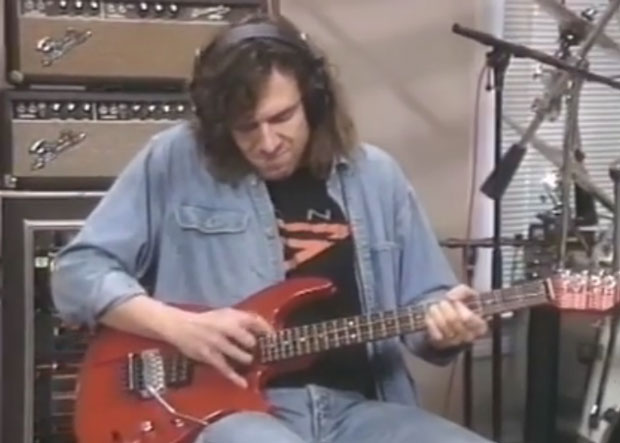Forgotten Guitar: In-Studio Tips and Performance from Session Giant Dann Huff
These tips can be applied whether you're working at Abbey Road or your home studio.

Dann Huff is often associated with his session work on Eighties mega-hits, including Madonna’s "Like a Prayer,” Michael Jackson’s "Man in the Mirror” and, of course, that “Danger Zone” guitar solo.
But the multi-award-winning Huff has had a seriously varied career, with more than 1,500 song credits to his name. He's played on everything from Michael Bolton to Megadeth.
Receiving his first session bookings in Nashville recording studios at 16, he was producing his own music by his 20s, initially with Whiteheart and later with melodic hard rock outfit Giant.
In the early Nineties, Huff produced an instructional tape that coincided with the release of Giant’s followup to their 1989 debut, Last of the Runaways. In the clip below, taken from the aforementioned video, Huff performs the guitar solo from the album’s title track, “Time to Burn." He then goes on to offer some insight into how he records multi-layered guitar parts to create unique tones.
He also discusses some of the other techniques used on the many hit recordings he had been involved in up to that point. These are tips that can be applied whether you're working at Abbey Road or your home studio.
Jonathan Graham is an ACM UK graduate based in London studying under the likes of Guthrie Govan and Pete Friesen. He is the creator of ForgottenGuitar.com, a classic-guitar media website, and is completing his debut album, Protagonist, due for release in 2016. Updates also can be found at Graham's YouTube channel.
Get The Pick Newsletter
All the latest guitar news, interviews, lessons, reviews, deals and more, direct to your inbox!
“There are so many sounds to be discovered when you get away from using a pick”: Jared James Nichols shows you how to add “snap, crackle and pop” to your playing with banjo rolls and string snaps
How to find new approaches to blues soloing – using fingerstyle improv ideas and Roy Buchanan-inspired licks









